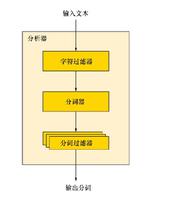Elasticsearch的mapping数据类型设置

1.字段类型概述
2.字符串类型
(1)string
string类型在ElasticSearch 旧版本中使用较多,从ElasticSearch 5.x开始不再支持string,由text和keyword类型替代。
(2)text
当一个字段是要被全文搜索的,比如Email内容、产品描述,应该使用text类型。设置text类型以后,字段内容会被分析,在生成倒排索引以前,字符串会被分析器分成一个一个词项。text类型的字段不用于排序,很少用于聚合。
(3)keyword
keyword类型适用于索引结构化的字段,比如email地址、主机名、状态码和标签。如果字段需要进行过滤(比如查找已发布博客中status属性为published的文章)、排序、聚合。keyword类型的字段只能通过精确值搜索到。
3.整数类型
在满足需求的情况下,尽可能选择范围小的数据类型。比如,某个字段的取值最大值不会超过100,那么选择byte类型即可。迄今为止吉尼斯记录的人类的年龄的最大值为134岁,对于年龄字段,short足矣。字段的长度越短,索引和搜索的效率越高。
4.浮点类型
对于float、half_float和scaled_float,-0.0和+0.0是不同的值,使用term查询查找-0.0不会匹配+0.0,同样range查询中上边界是-0.0不会匹配+0.0,下边界是+0.0不会匹配-0.0。
其中scaled_float,比如价格只需要精确到分,price为57.34的字段缩放因子为100,存起来就是5734
优先考虑使用带缩放因子的scaled_float浮点类型。
5.date类型
我们人类使用的计时系统是相当复杂的:秒是基本单位, 60秒为1分钟, 60分钟为1小时, 24小时是一天……如果计算机也使用相同的方式来计时, 那显然就要用多个变量来分别存放年月日时分秒, 不停的进行进位运算, 而且还要处理偶尔的闰年和闰秒以及协调不同的时区. 基于”追求简单”的设计理念, UNIX在内部采用了一种最简单的计时方式:
计算从UNIX诞生的UTC时间1970年1月1日0时0分0秒起, 流逝的秒数. UTC时间1970年1月1日0时0分0秒就是UNIX时间0, UTC时间1970年1月2日0时0分0秒就是UNIX时间86400.
这个计时系统被所有的UNIX和类UNIX系统继承了下来, 而且影响了许多非UNIX系统.
日期类型表示格式可以是以下几种:
(1)日期格式的字符串,比如 “2018-01-13” 或 “2018-01-13 12:10:30”
(2)long类型的毫秒数( milliseconds-since-the-epoch,epoch就是指UNIX诞生的UTC时间1970年1月1日0时0分0秒)
(3)integer的秒数(seconds-since-the-epoch)
ElasticSearch 内部会将日期数据转换为UTC,并存储为milliseconds-since-the-epoch的long型整数。
例子:日期格式数据
(1)创建索引
DELETE testPUT test
{
"mappings":{
"my":{
"properties": {
"postdate":{
"type":"date",
"format": "yyyy-MM-dd HH:mm:ss||yyyy-MM-dd||epoch_millis"
}
}
}
}
}
(2)写入文档
PUT test/my/1{
"postdate":"2018-01-13"
}
PUT test/my/2
{
"postdate":"2018-01-01 00:01:05"
}
PUT test/my/3
{
"postdate":"1420077400001"
}
(3)批量查询
GET test/my/_mget{
"ids":["1","2","3"]
}
{ "docs": [
{
"_index": "test",
"_type": "my",
"_id": "1",
"_version": 1,
"found": true,
"_source": {
"postdate": "2018-01-13"
}
},
{
"_index": "test",
"_type": "my",
"_id": "2",
"_version": 1,
"found": true,
"_source": {
"postdate": "2018-01-01 00:01:05"
}
},
{
"_index": "test",
"_type": "my",
"_id": "3",
"_version": 2,
"found": true,
"_source": {
"postdate": "1420077400001"
}
}
]
}
6.boolean类型
逻辑类型(布尔类型)可以接受true/false/”true”/”false”值
(1)先删除已经存在的索引,再创建
DELETE testPUT test
{
"mappings":{
"my":{
"properties": {
"empty":{"type":"boolean"}
}
}
}
}
(2)添加文档
PUT test/my/1{
"empty":"true"
}
PUT test/my/2
{
"empty":false
}
{ "docs": [
{
"_index": "test",
"_type": "my",
"_id": "1",
"_version": 1,
"found": true,
"_source": {
"empty": "true"
}
},
{
"_index": "test",
"_type": "my",
"_id": "2",
"_version": 1,
"found": true,
"_source": {
"empty": false
}
}
]
}
7.binary类型
二进制字段是指用base64来表示索引中存储的二进制数据,可用来存储二进制形式的数据,例如图像。默认情况下,该类型的字段只存储不索引。二进制类型只支持index_name属性。
8.array类型
在ElasticSearch中,没有专门的数组(Array)数据类型,但是,在默认情况下,任意一个字段都可以包含0或多个值,这意味着每个字段默认都是数组类型,只不过,数组类型的各个元素值的数据类型必须相同。在ElasticSearch中,数组是开箱即用的(out of box),不需要进行任何配置,就可以直接使用。
在同一个数组中,数组元素的数据类型是相同的,ElasticSearch不支持元素为多个数据类型:[ 10, “some string” ],常用的数组类型是:
(1)字符数组: [ “one”, “two” ]
(2)整数数组: productid:[ 1, 2 ]
(3)对象(文档)数组: “user”:[ { “name”: “Mary”, “age”: 12 }, { “name”: “John”, “age”: 10 }],ElasticSearch内部把对象数组展开为 {“user.name”: [“Mary”, “John”], “user.age”: [12,10]}
9.object类型
JSON天生具有层级关系,文档会包含嵌套的对象
DELETE testPUT test
PUT test/my/1
{
"employee":{
"age":30,
"fullname":{
"first":"hadron",
"last":"cheng"
}
}
}
上面文档整体是一个JSON,JSON中包含一个employee,employee又包含一个fullname。
GET test/_mapping
{
"test": {
"mappings": {
"my": {
"properties": {
"employee": {
"properties": {
"age": { "type": "long"},
"fullname": {
"properties": {
"first": {
"type": "text",
"fields": {
"keyword": {
"type": "keyword",
"ignore_above": 256
}
}
},
"last": {
"type": "text",
"fields": {
"keyword": {
"type": "keyword",
"ignore_above": 256
}
}
}
}
}
}
}
}
}
}
}
}
10.ip类型
ip类型的字段用于存储IPv4或者IPv6的地址
(1)创建索引
DELETE testPUT test
{
"mappings": {
"my":{
"properties": {
"nodeIP":{
"type": "ip"
}
}
}
}
}
(2)查询字段
GET test/_search{
"query": {
"term": {
"nodeIP": "192.168.0.0/16"
}
}
}
{ "took": 111,
"timed_out": false,
"_shards": {
"total": 5,
"successful": 5,
"skipped": 0,
"failed": 0
},
"hits": {
"total": 1,
"max_score": 1,
"hits": [
{
"_index": "test",
"_type": "my",
"_id": "1",
"_score": 1,
"_source": {
"nodeIP": "192.168.1.2"
}
}
]
}
}
以上是 Elasticsearch的mapping数据类型设置 的全部内容, 来源链接: utcz.com/z/515836.html





